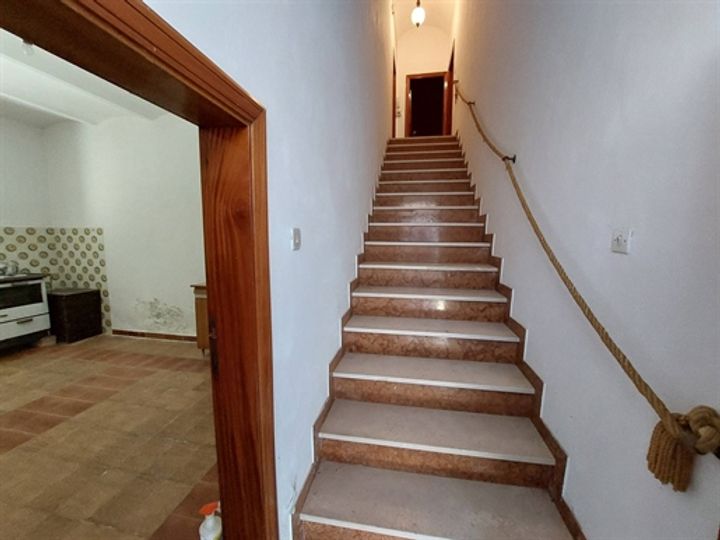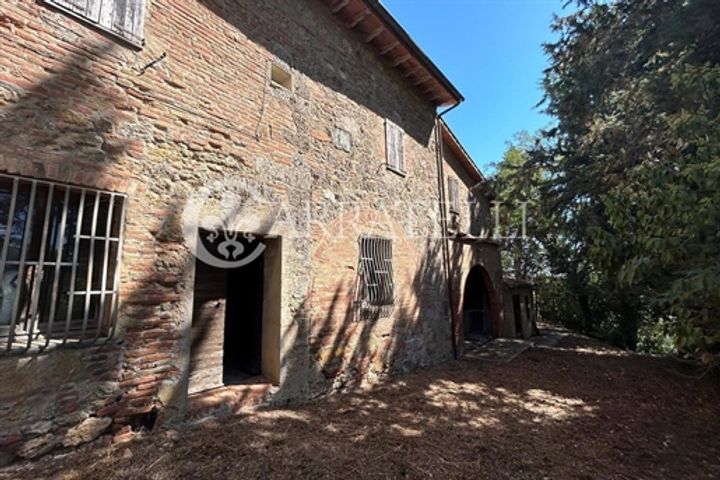Real estate prices in Chiusi are influenced by a variety of factors, including location, historical significance, and local amenities. Properties situated within the historic center, characterized by medieval architecture, often command higher prices due to their cultural appeal and proximity to tourist attractions such as the Chiusi Cathedral and the archaeological museum. Additionally, the allure of the Tuscan countryside attracts buyers seeking tranquility and picturesque views, which can drive up demand and prices in surrounding rural areas. The availability of modern conveniences, such as schools, transport links, and healthcare facilities, also plays a critical role; for instance, properties near the Chiusi-Chianciano Terme railway station, which connects to larger cities like Siena and Florence, tend to have a higher market value. Seasonality is another factor, as the influx of tourists during the summer months can temporarily elevate prices in the rental market, particularly for short-term vacation homes. The overall economic climate, both in Italy and the European Union, can further impact buyer confidence and investment levels, shaping the broader real estate landscape in Chiusi.
Chiusi
Location
Price Range
Any price
Price Range
Minimum
No min
Maximum
No max
Property type
Show all
Property type
Show all
House
Apartment
Building
Other
Bedrooms
Any beds
Bedrooms
Minimum
No min
Maximum
No max
Surface Range
Any surface
Surface Range
Minimum
No min
Maximum
No max
Sale type
For sale
Sale type
Show all
To rent
For sale
Location
Apartments and houses for sale in Chiusi
4 results
Recent
Chiusi insights
| Aspect | Summary |
|---|---|
| Population | Approximately 8,000 residents. |
| Average Property Price | Around €150,000. |
| Rental Yield | Estimated at 6%. |
| Average Rent | Approximately €800 per month. |
| Occupancy Rate | About 80% occupancy. |
| Capital Growth Rate | Historical growth of 3% per year. |
| Property Tax | Approx. 1.1% of property value. |
| Transaction Costs | Estimated at 7% of property price. |
| Expected ROI | Around 10% including capital growth. |
| Economic Growth Impact | Moderate growth due to tourism. |
Chiusi FAQ
What factors influence real estate prices in Chiusi?
How has the real estate market in Chiusi changed over the past few years?
Over the past few years, the real estate market in Chiusi has experienced notable changes, largely driven by increased interest from both domestic and international buyers. Property prices have seen a modest uptick, with average prices rising by approximately 5-10% since 2020. This shift can be attributed to the town's appealing blend of historical charm, scenic views, and connectivity to larger cities like Florence and Rome. The demand for vacation homes has surged, particularly among buyers from northern Europe seeking tranquil rural retreats. Moreover, the influx of remote workers has contributed to a heightened interest in properties with larger living spaces and outdoor areas. For example, renovated rustic villas showcasing traditional Tuscan architecture have become popular, often selling quickly within the range of €200,000 to €500,000. Additionally, smaller apartments in the town center, which previously languished on the market, have begun to attract buyers looking for investment opportunities amidst a broader trend of urban migration.
What is the average price of homes in Chiusi?
The average price of homes in Chiusi, a charming town in the Tuscany region of Italy, tends to vary based on property type and location. In general, the cost for a small apartment in the historical center can range from €80,000 to €150,000, while larger homes or villas slightly away from the center may start around €200,000 and can go up to €400,000 or higher, depending on size and amenities. Properties with panoramic views of the surrounding countryside or those that feature traditional Tuscan architecture often command premium prices. For instance, a three-bedroom home with a garden might list for around €300,000, while more luxurious estates can exceed €500,000, especially if additional land or modern renovations are included. Additionally, the market can experience fluctuations that reflect the seasonal influx of tourists, often impacting rental properties in the area.
Are property prices in Chiusi higher in certain neighborhoods?
Property prices in Chiusi can vary significantly between different neighborhoods, influenced by factors such as location, amenities, and local demand. For instance, properties near the historic center often command higher prices due to their proximity to cultural sites and restaurants. Areas like Via Pio II, with well-preserved Tuscan architecture and scenic views, tend to attract buyers looking for charm and convenience, driving prices up. In contrast, neighborhoods further from the center, such as those on the outskirts of town, may offer lower prices, appealing to families or those seeking more space. Additionally, proximity to public transportation, like the Chiusi-Chianciano Terme railway station, can also impact property values, as it makes commuting easier for residents.
How do seasonal trends affect real estate prices in Chiusi?
Seasonal trends significantly influence real estate prices in Chiusi, particularly due to its appeal as a tourist destination in Tuscany. During the summer months, there is a spike in demand for vacation rentals and second homes, driving up property prices as buyers compete for limited inventory. For example, charming historic homes near the town center or those with scenic views tend to see their value peak from May to September. Conversely, during the colder months, particularly from November to February, interest in the market wanes, leading to lower prices and more negotiation power for buyers. Additionally, the release of local festivals, such as the famous “Palio della Vittoria,” often correlates with seasonal price fluctuations as it attracts visitors and prospective homeowners, resulting in temporary boosts in real estate prices around those events. Properties with gardens or outdoor spaces become particularly sought after during the warmer seasons, while smaller apartments may see a decline in value when competition from vacation rentals decreases.
What are the typical closing costs when buying property in Chiusi?
When buying property in Chiusi, a buyer can expect several typical closing costs that can add significantly to the overall expense of the purchase. One of the primary costs is the notary fee, which usually ranges from 1% to 2.5% of the property's purchase price, as notaries play a crucial role in ensuring the transaction is conducted legally. Additionally, buyers are often required to pay a registration tax, which can vary depending on whether the property is classified as a first home or a secondary residence, generally around 2% for a primary residence and up to 9% for others. Other costs may include a mortgage arrangement fee if financing is involved, which typically averages about 1% of the loan amount. There might also be fees for property inspections and due diligence, as well as real estate agency commissions that can be around 3% to 5% of the purchase price. Utilities transfer fees and land registry charges are also common components of the total closing costs, along with any additional legal fees if the buyer opts for additional legal representation throughout the process.
What should I know about property taxes in Chiusi?
Property taxes in Chiusi, like the rest of Italy, primarily consist of IMU (Imposta Municipale Unica), TASI (Tributo per i Servizi Indivisibili), and TARI (Tassa Rifiuti). The IMU applies to owned properties but is exempt for primary residences, unless considered luxury homes. For example, a villa might incur IMU charges while a modest apartment would not. The TASI covers services like street maintenance and lighting, and is generally levied at a fixed rate determined by local municipalities, which can vary across the region. TARI is charged based on property size and the number of occupants, aimed at funding waste collection and disposal services. In Chiusi, municipal tax rates may fluctuate annually, and property owners are often required to submit annual declarations to ensure compliance with local guidelines. Failure to pay property taxes can result in penalties and interest, adding to the overall liability.





